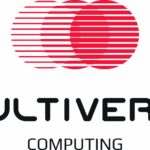![]()
A team of researchers from the Osaka University, Japan has in a new tech breakthrough found a way to improve the transfer efficiency between quantum information carriers. The new study based on entrenched nanoscience is compatible with upcoming advanced communication technologies.
The study published in science journal, Applied Physics Express, the research team at Osaka together with its partners was able to covert photon to electron with the use of a metal nanostructure, in the process fabricating a nanoantenna that will help bring quantum information networks closer to practical use.
The new technological breakthrough is a vital step in the development of advanced technologies used for sharing and processing data.
Quantum information is hinged on secure readouts that may be comparatively complex, for example, photon polarization and electron spin, with researchers proposing the use of quantum dots, (semiconductor nanoboxes) for the storage and transfer of quantum information. But in all these the quantum repeater technologies may be limited in ability and one of the limitations is that they are not known to effectively convert photon-based information to electron-based information and this challenge was what prompted the Osaka University researchers to begin their study.
“The efficiency of converting single photons into single electrons in gallium arsenide quantum dots—common materials in quantum communication research—is currently too low,” explains lead author Rio Fukai. “Accordingly, we designed a nanoantenna—consisting of ultra-small concentric rings of gold—to focus light onto a single quantum dot, resulting in voltage readout from our device.”
The team were able to enhance photon absorption by a factor of up to 9, as against when not using the nanoantenna. When the single quantum dot got illuminated, it was discovered that majority of the photogenerated electrons were not trapped there but were rather seen accumulating in impurities and other areas of the device. It was noted that the excess electrons gave a minimal voltage readout that was readily distinguished from that generated by the quantum dot electrons, and hence did not affect the device’s intended readout.
“Theoretical simulations indicate that we can improve the photon absorption by up to a factor of 25,” says senior author Akira Oiwa. “Improving the alignment of the light source and more precisely fabricating the nanoantenna are ongoing research directions in our group.”
The result of the study is very significant as it has vital applications in different facets: Future researchers can now use well-established nano-photonics in quantum communication and information networks.
In the coming years, quantum technology could give an important lead in information security and data processing with the use of abstract physics properties like entanglement and superposition.
Reference: “Detection of photogenerated single electrons in a lateral quantum dot with a surface plasmon antenna” by Rio Fukai, Yuji Sakai, Takafumi Fujita, Haruki Kiyama, Arne Ludwig, Andreas D. Wieck and Akira Oiwa, 9 November 2021, Applied Physics Express.
Discover more from TechBooky
Subscribe to get the latest posts sent to your email.







